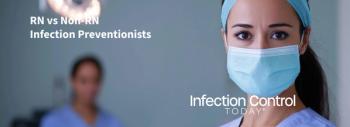
WHO Issues First Viral Hepatitis Testing Guidelines
The World Health Organization (WHO) has issued its first-ever global
WHO estimates that more than 300 million people are chronically infected with hepatitis B or C worldwide. However, less than 5 percent of these people have been tested or are aware of their diagnosis.
"Many people, especially those in low- and middle-income countries, don't know they are infected, so they cannot access the right treatment,” said Dr. Marc Bulterys, team lead of WHO’s Global Hepatitis Program. “Improving access to hepatitis testing is critical to increasing access to life-saving treatments."
A cure for hepatitis C is now available globally. Novel medicines, such as direct acting antivirals (DAA), cure more than 9 out of 10 people in just 12– to 4 weeks. About 1 million people worldwide have been cured through the use of DAA medicines. Effective long-term antiviral treatment is also available for people with chronic hepatitis B. In many countries, however, challenges remain in accessing these medicines .
“The new WHO guidelines simplify approaches to testing by identifying who to test, where to test, and how to test – and how to connect people with care and treatment after they test positive,” said Dr. Philippa Easterbrook from WHO’s Global Hepatitis Program, who presented the guidelines during the APASL Conference.
The new guidelines recommend the use of rapid diagnostic tests for hard-to-reach populations, and targeted testing in groups most affected by hepatitis B or C. This includes people who inject drugs, people with HIV, children of mothers with hepatitis B or C infection, and people with symptoms or blood test results suggestive of viral hepatitis. It also recommends testing all health workers and offering hepatitis B vaccination.
Promoting the uptake of testing and linking people to care after a positive test are vital. Trained community or peer workers may play a critical role, as well as reminding doctors to order tests for people at high risk. Testing should also be promoted as part of integrated care for people in prisons and drug treatment programmes.
“The guidance also advises countries on planning for hepatitis testing, by strengthening laboratory facilities and making the best use of the services and staff from existing testing programmes, such as HIV,” added Easterbrook.
Giten Khwairakpam from TREAT Asia in Bangkok said, "It is important to understand and share innovative testing approaches to encourage hepatitis testing in more countries around the world." Khwairakpam co-chaired the session, which presented examples of innovative hepatitis testing projects among the general population as well as high-risk groups, such as people who inject drugs in China, India and Mongolia.
These new testing guidelines follow on from recent WHO guidelines on the prevention, care and treatment of chronic hepatitis B and C.
Source: WHO
Newsletter
Stay prepared and protected with Infection Control Today's newsletter, delivering essential updates, best practices, and expert insights for infection preventionists.






